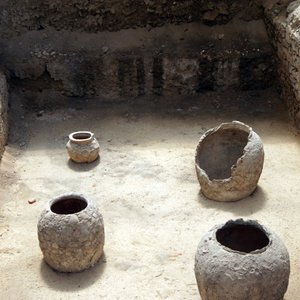Radiant heating might seem like a modern marvel, but its origins actually date back thousands of years. Believe it or not, the concept of heating a room from the ground up was pioneered not in the 20th century—but by the engineers of the Roman Empire.
Let’s take a quick journey back in time to discover the world’s first radiant heating system—the hypocaust—and how it paved the way for today’s efficient and elegant electric radiant solutions.
What Is a Hypocaust?
The term hypocaust refers to an ancient underfloor heating system developed by the Romans. According to Britannica Encyclopedia, a hypocaust is an open space beneath a floor, heated by gases and smoke from a fire or furnace. This heated air would circulate through a series of open cavities—beneath the floor and within the walls—before escaping through flues in the ceiling or roof.
This system was especially common in the hot rooms of Roman bathhouses, as well as private homes and public buildings. While ancient Greece had experimented with similar techniques, it was the Romans who engineered the first truly functional radiant heating system.
How Did It Work?
Hypocaust systems used a clever combination of architecture and thermal dynamics. Floors were elevated approximately two feet above the ground using stacked tile pillars. Hot air and smoke generated from a fire would then circulate freely underneath this raised floor and through wall flues, efficiently heating the space above.

The results? Even, consistent warmth—without open flames or woodsmoke filling the room. Sound familiar?
Unfortunately, with the fall of the Roman Empire, this technology was largely lost. People reverted to heating with open fires and stoves, and the innovations of the hypocaust system faded into history—for a while.
The Return of Radiant Heating
Centuries later, the concept of radiant heating reemerged thanks to the work of inventors like Benjamin Franklin, A.H. Barker, Frank Lloyd Wright, and other pioneers of modern heating technology. Over time, radiant systems evolved from large-scale, labor-intensive builds into refined, efficient systems powered by hot water (hydronic) and electricity.
Today, we see radiant heating in:
Residential homes
Hotels and spas
Corporate offices
-
Outdoor walkways and driveways
…and so much more.
From the Roman Empire to WarmlyYours
WarmlyYours Owner & President Julia Billen and her family recently had the chance to see a real hypocaust system firsthand during a visit to Athens, Greece.
“I was humbled to have the privilege of seeing, first-hand, the roots and foundation of our innovative industry,” said Julia. “I’m so proud that I am able to play a role in the new advancements in radiant heating technology. We’ve come a long way!”
The Modern Benefits of Radiant Heat
Thanks to the foundation laid by ancient engineers, today’s radiant heating solutions are more accessible and efficient than ever. At WarmlyYours, we specialize in electric radiant heating systems that offer numerous advantages over traditional forced air heating:
Energy efficiency
Lower utility bills
Healthier indoor air quality (no blowing allergens)
Targeted comfort—just where you need it
Seamless integration with modern floor styles
Want proof? One customer saw both their gas and electric bills drop significantly after installing radiant electric floor heating.
📉 Read how radiant heating cut energy bills
Whether it’s under tile, vinyl, hardwood, or even snow-covered pavers, radiant heat continues to improve everyday living—just as it did over 2,000 years ago.
Explore our electric radiant heating solutions and experience the innovation that started with a fire beneath a Roman floor.
🛠️ Get a Free SmartPlan | 🧠 Learn More About Radiant Heating




were hypocaust systems open or closed systems ?
Thanks for the question! Because a hypocaust system required a significant amount of upkeep (someone had to tend the fire, after all) and input (the fuel source for the fire), it would probably be most accurately described as an “open” system.